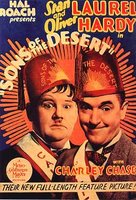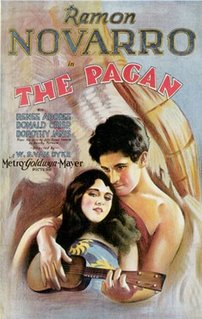 When the early talkies weren't busily exploring the backstage area of theaters and night clubs --- which wasn't often, they displayed a remarkable diversity of settings that belies the popular and largely incorrect notion that they were all hopelessly static, claustrophobic productions. If anything, it's the films that would arrive in 1931 and 1932 that seem to me to always be set primarily in offices and apartments, --- or at least the vast majority of them do.
When the early talkies weren't busily exploring the backstage area of theaters and night clubs --- which wasn't often, they displayed a remarkable diversity of settings that belies the popular and largely incorrect notion that they were all hopelessly static, claustrophobic productions. If anything, it's the films that would arrive in 1931 and 1932 that seem to me to always be set primarily in offices and apartments, --- or at least the vast majority of them do.
Audiences between 1929 and 1930 who desired something other than views of dancing legs, dressing rooms and city streets enjoyed a wealth of options. Those seeking far flung exotic locales could see films set in jungles, tropic isles, the Far East, atop the ocean and underneath it, and amidst polar glaciers. Equally exotic but no less picturesque were films entirely or partially set in prisons, airplanes, zeppelins, submarines, ships of the sail and steam eras, rail and subway trains, coal mines, the deep woods, snowy mountain ranges and just about every European city you can think of, ancient and modern.
The one setting that most easily lent itself to melody (although no setting or locale was beyond the ingenuity of film theme song composers) was the tropics. Irresistible to composers and lyricists, even what is thought to be the first modern era stage musical, "Florodora" (1900-1902) had a mythic tropical setting that allowed for at least two songs which celebrated that fact --- and countless tropical themed melodies would follow in the coming years, most rather undistinguished and sounding suspiciously much alike, but vastly popular nonetheless.
"The Pagan," an MGM feature released in April of 1929, hit the mark with escapist minded audiences and devout fans of its star, Ramon Novarro, alike. Although a silent film with a synchronized music, vocal and sound effects score, "The Pagan" had enough drawing power to succeed at a time when theaters were swelling with all-talkie product. Visually stunning, and containing what many justly believe to be Novarro's signature performance and perhaps even role of a lifetime, success of "The Pagan" was also due in no small way to the film's theme song, which swept the country and globe before, during and after the film's release. Despite the widespread popularity, it's always interesting to find one somewhat slightly dissenting voice, as it was with one unnamed reviewer in a July of 1929 newspaper:
"Novarro, who is said to be studying for the opera, sings the theme song --- and you are never in doubt deciding it to be the theme song. It is sung again and again, at opportune times and some not so opportune. This song is the only vocalization...."

One of the purest and most faithful to the source period interpretations of the tune can be heard here by vocalist Annette Hanshaw. Epic in its simplicity.
1929 would also find Joan Crawford removed from a dance floor and placed in a jungle in "Untamed," but unlike "The Pagan," her character (given the chimp-ish name "Bingo" here) lost no time in hitching a ride back to civilization and, well --- dance floors. The film spawned two popular melodies, "That Wonderful Something" (which can be heard in numerous other 1929 and 1930 Metro films as background music) and the far more memorable, in my opinion, "Chant of the Jungle."

Here, two fine 1929 versions of "Chant of the Jungle" recorded just weeks apart. The first a strident, somewhat sensual rendition by Paul Specht and His Orchestra for the Columbia label, and the second a more playful, high spirited interpretation by Nat Shikret and the Victor Orchestra.
"Chant of the Jungle" (1929) Paul Specht & His Orchestra
"Chant of the Jungle" (1929) Nat Shilkret & His Orchestra
The only palm tree to be seen in Warner Bros. "Is Everybody Happy?" (1929) was one serving as a backdrop for a wonderfully tawdry song and dance number by Ann Pennington, the chirpy and risque tune "Samoa," which can be heard (although not seen --- the film is lost) in an early sequence where fresh from Budapest to New York City immigrant and saxophonist Ted Lewis happens upon his leggy girlfriend from the old country after spotting a poster outside a "follies" theater.

from old Samoa --- Hello, Aloha!
It's the port of missing men, 'cause they won't come home again,
from old Samoa!
They say the native girls wear dresses there with leaves that are grown,
I've never seen a sailor yet who'll leave them alone ---
Once I heard a captain crack, as they danced around his shack,
'I want some more of some more of Samoa!'"
Simply because we have the rare luxury of being able to do so, here's the "Samoa" sequence from both the domestic release version of the film, and the foreign export version. The latter version gives fair indication of how these overseas release versions were prepared, with music and song being brought up front and center and dialogue being deleted altogether or bridged over with a newly prepared musical score. (The domestic release segment contains what's probably the most intentionally amusing dialogue exchange in the whole film. Listen for it!)
"Samoa" (1929) Domestic Release Version
"Samoa" (1929) Foreign Release Version
Lastly, although firmly out of the early talkie era, and for no reason other than I think you may enjoy it, a few moments of the Hawaiian themed melody, "Honolulu Baby," from the 1933 Metro-Roach film "Sons of the Desert," which --- for the uninitiated --- starred Stan Laurel and Oliver Hardy.

Not a soundtrack excerpt nor a commercial 78rpm recording (it was never recorded for that purpose, inexplicably) the following audio is that of a scoring session disc recorded prior to actual filming and then played back whilst the cameras rolled. For those familiar with the film, it's always a novelty to hear the melody without a dialogue overlay and other ambient effects. Roach Studio composer/musician Marvin Hatley supplies the tune, and Ty Parvis the vocal.
Aloha!
###


2 comments:
This was a fascinating article, thank you. 'The Pagan' remains my favorite movie of the silent era, and I cannot believe it is unavailable on dvd or vhs. Is there anywhere I can find any clips of Ramon singing the Pagan Love Song?? Thanks, Katherine.
And thank you for taking time to write and say so! I think our best chance for ever having "The Pagan" on DVD would come when the loosely related 1950 Esther Williams film eventually arrives, and the 1929 version might be tossed in as an "extra." I doubt they'd invest the minor effort needed to tweak and correct the audio, however. Unfortunately, the only rendition of Novarro singing the title tune I have is the one included at the end of the post titled "The Best Sound in Town."
Again, thanks!
Jeff
Post a Comment